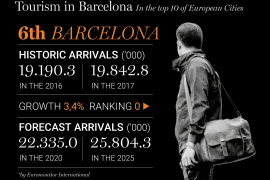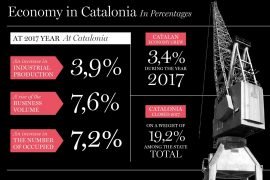The European Union set itself the goal for the year 2020 that at least 40% of the population between 30 and 34 years of age would have completed higher studies or tertiary education. And that objective was almost reached last year, when the percentage was already 39.9%, according to the latest data provided by Eurostat.
Higher or tertiary education is considered any type of post-secondary education such as that taught at universities or other higher vocational training centers.
The progression of the educational level in Europe has been constant over the last few years. In 2002, only 23.6% of the European population included in the aforementioned ages had completed higher education. 15 years later, the percentage had increased by more than 16 points.
Les dones van per davant dels homes en aquest àmbit. Així, al 2017, el percentatge de població femenina d’entre 30 i 34 anys d’edat amb estudis superiors finalitzats era ja del 44,9%, mentre que en el cas de la població masculina es situava encara en el 34,9%.
Women go ahead of men in this field. Thus, in 2017, the percentage of female population between 30 and 34 years of age with completed higher studies was already 44.9%, while in the case of the male population it was still at 34.9%.
By countries, the most advanced in this area is Lithuania, where last year, 58% of the population aged 30-34 had completed some form of higher education. Cyprus occupy second place (55.8%), Iceland third (53.7%), Ireland fourth (53.5%) and Switzerland fifth (52.8 percent). Spain stands in the 20th position with 41.2%, slightly above the average for the European Union (39.9%).
In the lower reaches, countries with the worst percentages are Romania (26.3%), Italy (26.9%) and Turkey (27.3%).
Rankings vary if we differentiate between men and women. Thus, Switzerland is the European country where a greater percentage of the male population has completed some form of higher education (54%). Italy occupy the last position (19.8%). In the case of women, the first country is Lithuania (68.1%) and the last Turkey (26%). In all countries of the European Union the percentage of women with completed higher education is superior to that of men.
Regarding the objectives set for the year 2020, there are already 14 European Union countries that have managed to reach them. It is about the Czech Republic, Denmark, Estonia, Greece, Italy, Cyprus, Latvia, Lithuania, Holland, Austria, Poland, Slovenia, Finland and Sweden.
In the case of Spain, the percentage in 2017, which was 41.2%, stood at 2.8 points below the target set for 2020, which is 44%.

















